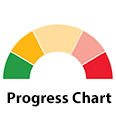Sustainable cities and communities

A woman fills drinking-water bottles in the slums of Islamabad, the capital of Pakistan.
© IWMI/Muhammad Usman GhaniA deepening global slum crisis requires urgent action on housing, transportation and services
In 2022, 24.8 per cent of the urban population lived in slums or informal settlements, slightly lower than 25 per cent in 2015 but higher than 24.2 per cent in 2020. The total slum population was 1.12 billion in 2022, 130 million more than in 2015, marking a reversal from the consistent decrease observed from 2000 to 2020. The setback was mainly in Eastern and South-Eastern Asia (from 21.7 per cent in 2020 to 24.8 per cent in 2022) and sub-Saharan Africa (from 50.2 per cent in 2020 to 53.6 per cent in 2022).
Over 85 per cent of all slum dwellers in 2022 were in Eastern and South-Eastern Asia (362 million), Central and Southern Asia (334 million) and sub-Saharan Africa (265 million). Projections suggest that sub-Saharan Africa will experience the most substantial proportional increase, with an estimated extra 360 million slum dwellers by 2030 if current trends persist. This emphasizes the urgent need for a comprehensive approach to addressing the housing crisis, including through diverse housing options, while achieving equitable access to public transportation and essential services.
Proportion of global urban population living in slums, 2020 and 2022 (percentage)

* Excluding Australia and New Zealand
High rates of unregulated urban sprawl pressure the environment and diminish quality of life
Urban sprawl is characterized by the unplanned, low-density, uncontrolled expansion of urban areas into previously undeveloped rural or suburban areas. This unregulated growth has negative impacts on the natural environment and land use, contributing to increased air pollution and the loss of open spaces, wildlife habitats and agricultural land. Cities sprawled or grew outwards up to 3.7 times faster than they densified or grew upwards from 2000 to 2020, based on recent data from 1,217 cities in 185 countries. Globally, from 2000 to 2010, the average annual rate of sprawl reached 5.6 per cent while the annual densification rate lagged at 1.47 per cent.1 The sprawl rate slightly declined from 2010 to 2020, dropping to 3.6 per cent annually. Yet the gap with the densification rate, estimated at 0.95 per cent annually during the same period, remained substantial. Sustainable urban development calls for mitigating the adverse impacts of urban sprawl and achieving a balanced approach to urban growth.
1 The annual rate of sprawl is calculated as the annual rate of change in built-up areas outside urban boundaries in 2000 (but within 2020 urban boundaries) per city. The annual rate of densification is calculated as the annualized rate of change in built-up areas within the 2000 urban boundaries per city.
Air quality has improved but still falls short in terms of fully protecting public health
Each year, an estimated 4.2 million people die due to ambient air pollution. Globally, the population-weighted exposure to fine particulate matter (PM2.5) dropped from 39.1 ug/m3 in 2010‒2014 to 35.7 µg/m3 in 2015‒2019, a 9 per cent decline. Yet the level remains significantly higher than the recommended air quality guideline of 5 μg/m3 for public health protection. Eastern and South-Eastern Asia markedly improved air quality in 2015‒2019, after having the world’s second-highest PM2.5 concentrations in 2010‒2014. Similar advances in Europe and Northern America highlight the positive impacts of international cooperation and legislation, including the Convention on Long-Range Transboundary Air Pollution. By contrast, air pollution in sub-Saharan Africa and Northern Africa and Western Asia increased from 2010‒2014 to 2015-2019.
Improved air quality monitoring has been instrumental in confirming regional successes and informing policy decisions. Between 2011 and 2022, monitoring capacity worldwide grew sixfold, although 92 per cent of this expansion took place in high- and middle-income countries.
Five-year average population weighted PM2.5 concentrations in urban areas, 2010‒2014 and 2015‒2019 (micrograms per cubic metre)

Vibrant cities depend on open public spaces but too few residents have ready access
Open public spaces in urban areas foster inclusive and vibrant cities. Yet only 44 per cent of urban residents have an open public space conveniently located within a 400-metre walk, according to 2020 data from 1,365 cities across 187 countries. This lack of access disproportionately impacts people in the LDCs, where less than 30 per cent of urban dwellers can conveniently access open public spaces. Conversely, high-income regions such as Australia and New Zealand as well as Europe and Northern America have much greater rates of access, with 60 to 70 per cent of urban inhabitants living near public open spaces. The data underscore a pervasive global challenge. Without concerted efforts, the majority of urban populations will struggle to access vital amenities, particularly the most vulnerable residents.
Proportion of urban population with convenient access to open public spaces, within a 400-metre walking distance, 2020 (percentage)

*Excluding Australia and New Zealand.
Public transit remains out of easy reach for 40 per cent of urban residents worldwide
Ensuring equitable access to public transportation helps to reduce food insecurity, boost economies, empower women, and connect people to key health, education and financial services, especially vulnerable urban populations. Yet many cities worldwide lack adequate urban transit infrastructure. Only 6 in 10 urban residents have convenient access to public transit, based on data collected in 2023 from 2,039 cities in 188 countries. The shortfall is particularly problematic in the LDCs, where less than 4 in 10 urban residents have accessible public transportation options, compared to 8 in 10 in more affluent regions. Accelerated investments are needed to extend public transit services to the most marginalized communities, both in developing regions and impoverished urban neighbourhoods in developed countries. This effort is essential to foster inclusive urban development and improve the livelihoods of the urban poor.
Share of population with convenient access to public transportation in urban areas, 2023 (percentage)


